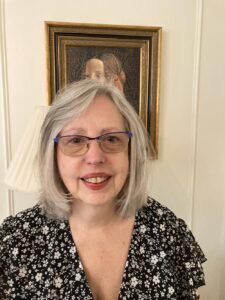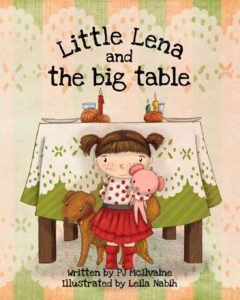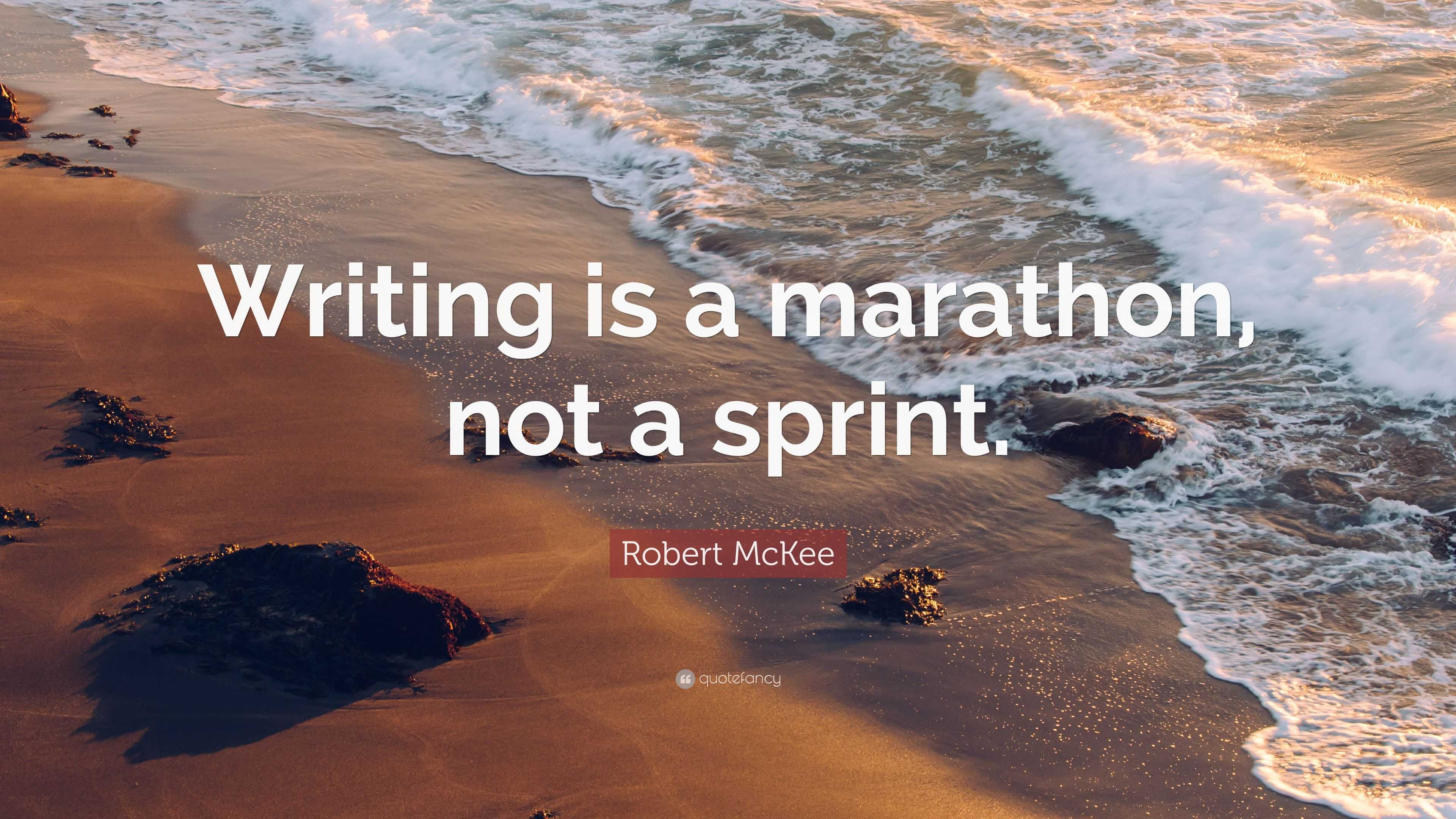 This month’s Author Interview is with PJ McIlvaine, a prolific author/screenwriter/editor/journalist. She’s got a great variety of bio statements out there, so instead of cooking up my own version, I’m instead going to pull a few sentences from those. Here goes!
This month’s Author Interview is with PJ McIlvaine, a prolific author/screenwriter/editor/journalist. She’s got a great variety of bio statements out there, so instead of cooking up my own version, I’m instead going to pull a few sentences from those. Here goes!
- PJ lives in Eastern Long Island with her family along with Luna, an extremely spoiled French Bulldog who plays a prominent role in PJ’s latest book, a contemporary adult romantic mystery romp in the vein of Knives Out.
- PJ has been published in numerous outlets including The New York Times, Newsday, Crime Reads, Writer’s Digest, and The Children’s Book Insider newsletter.
- PJ’s best-selling debut Middle-Grade Supernatural Historical Mystery novel Violet Yorke, Gilded Girl: Ghosts in the Closet was published in April 2022 by Darkstroke Books.
- PJ’s debut picture book Little Lena and the Big Table was published in May 2019 from Big Belly Book Co. with illustrations by Leila Nabih.
- PJ has four picture books tentatively coming out in 2024–2027 with Oghma Creative Media.
- She’s a co-host of #PBPitch, the première Twitter pitch party for picture book creators. After ten years, it’s time to move on. The last event will be held on June 20th.
- PJ loves all kinds of international noir thrillers, period pieces, gritty Westerns, CSNY, Bruce Hornsby, John Hiatt, Steve Earle, Bruce Springsteen, horror movies, black and white classics, Stephen King, old-time fiddle music, Contradance, Irish accents, pizza, vanilla ice cream, brownies, and pretty much anything with Danny Huston. Ciaran Hinds is a close second.
- When not writing, PJ is usually running after her rambunctious grandchildren who are an endless source of inspiration, exasperation, and perspiration.
- PJ is distantly related to the French writer and feminist Simone de Beauvoir.
Let’s get to the interview questions to learn a bit more about PJ!
RVC: Your career is so varied—screenwriter, journalist, picture book author, now adult thriller novelist. What draws you to write for such different audiences and genres?
 PJM: First, thank you for having me. That’s an excellent question. Well, I have a vivid imagination and as a kid growing up in rural Long Island—no malls, no cell phones, and no computers—my summer vacations consisted mostly of reading. It didn’t matter the genre or age category, I read everything, from middle-grade mysteries (I owe a debt of gratitude to Trixie Belden and Nancy Drew) to spicy adult fare that probably wasn’t appropriate (note to Moms–don’t leave your erotic novels out in plain sight).
PJM: First, thank you for having me. That’s an excellent question. Well, I have a vivid imagination and as a kid growing up in rural Long Island—no malls, no cell phones, and no computers—my summer vacations consisted mostly of reading. It didn’t matter the genre or age category, I read everything, from middle-grade mysteries (I owe a debt of gratitude to Trixie Belden and Nancy Drew) to spicy adult fare that probably wasn’t appropriate (note to Moms–don’t leave your erotic novels out in plain sight).
Now, as an old hippie lady, I’ve learned to trust and listen to my inner cricket and write what I’d like to read. I follow my passions and often it’s a crazy blur of fact and fiction. I know many writers worry about branding. I don’t. Look, I love vanilla ice cream, but a steady diet of that flavor alone would be boring. I love to stretch my writing muscles and challenge myself to write above my skill level or perceived notions of what I should be writing.
RVC: If we all only loved vanilla, Ben & Jerry would be out of business, right? Now, you’ve mentioned your family as a source of inspiration. Can you share a specific example of how your experiences with them influenced a story or character?
PJM: Oh boy, that’s a loaded question. One prime example of how my family inspired me is my Showtime original family movie, My Horrible Year, which starred Mimi Rogers, Karen Allen, and Eric Stolz and was nominated for an Emmy. It was the fifth screenplay I ever wrote—a real learning curve for a novelist—and was essentially a first draft about my oldest daughter and her love of wrestling. I can’t tell you how many hours we watched wrestling matches and wondered if it was real or fake. And no one was more shocked when the script was optioned and made.
RVC: Congrats on that!
 PJM: Thanks! Another more recent example is my adult thriller killer, A Good Man, a mash of genres that, in hindsight, was my attempt to give my late brother a better ending than he had in life. I wrote it in a white-hot fever—two months—and fried my brain. I bled on every page. Writers have many ideas; it’s like panning for gold. Some books you choose to write. This one chose me.
PJM: Thanks! Another more recent example is my adult thriller killer, A Good Man, a mash of genres that, in hindsight, was my attempt to give my late brother a better ending than he had in life. I wrote it in a white-hot fever—two months—and fried my brain. I bled on every page. Writers have many ideas; it’s like panning for gold. Some books you choose to write. This one chose me.
RVC: What sparked your love of picture books? Was there a specific book or author that ignited your passion for this format?
PJM: What sparked my love for picture books were my grandchildren. As babies and toddlers, I always read to them, and they loved it. Their enthusiasm was genuine. So, after reading many picture books, I had a eureka moment and realized that I had stories to tell in this format. And I did. As for authors I admire and try to emulate, Sherri Duskey Rinker is at the top of a long list. I wore out her books reading them to my grandkids.
RVC: Let’s talk about your first published picture book. What’s the story behind that story?
 PJM: Little Lena and the Big Table is dear to me because it’s basically the story of my brother and me at our kid’s table. He was an absolute terror and was used to getting his way. When we had pizza, he’d force me to switch our plates if he thought my slice was bigger. We’d tease each other mercilessly. What I wouldn’t give to have him at my table now.
PJM: Little Lena and the Big Table is dear to me because it’s basically the story of my brother and me at our kid’s table. He was an absolute terror and was used to getting his way. When we had pizza, he’d force me to switch our plates if he thought my slice was bigger. We’d tease each other mercilessly. What I wouldn’t give to have him at my table now.
RVC: What was the most useful lesson that book taught you?
PJM: That I wrote something that resonated with kids of all ages. It seems everyone has an experience at the table, good, bad, or indifferent, and I was able to tap into that.
RVC: You had another picture book come just a few months back—No Such Things as Dragons. What’s the logline/teaser for that story?
PJM:
Everyone knows there are no such things as dragons.
But is that really so?
When new student Georges comes to class, nervous and anxious to fit in, he challenges preconceived notions of what a dragon is supposed to be. Child, adult, or dragon, we want to be liked and appreciated for what makes us unique and special-even if we have a tail, scales, and breathe fire.
RVC: This book has some lessons about kindness and empathy. How do you balance these messages with creating a story that’s fun and engaging for children?
PJM: I always go for the humorous and zany because that’s the kid in me. As kids, we’d watch The Three Stooges and even now, years later, it still makes me howl.
RVC: Me too.
PJM: I’m not preachy. That’s not my style. So while the book may have a lesson, it’s more subtle and wrapped up in comedy that kids can appreciate.
RVC: What changed about this story in the drafting and revision process?
PJM: Honestly, nothing. The story is as I originally wrote it. We were on the same page from the get-go.
RVC: Let’s talk process. What does a typical writing day look like for you?
PJM: It can vary—if I’m working on novels vs. screenplays—but I write every day without fail. If you’re going to be a writer, you must write. Mornings tend to veer towards marketing, queries, etc. Afternoons are for writing. On good days, I can get 4–6 hours in, especially on the weekends. When I’m in the zone, I have a daily or weekly word tally that keeps me enthused. Some days I exceed the goal, others it’s less, but it all evens out in the end. Writing, like everything else, is a discipline. The more you do it, the better you get.
RVC: What’s the most difficult aspect of being a writer?
PJM: For me, it’s putting myself out there. I’m a recluse by nature. I’d be happy just staying home and writing all day long. I took a big step earlier this year by traveling to my first children’s book festival as an invited author. This was a huge leap for me, but a necessary one. Despite all my fears and nerves, I had a great time. And it didn’t hurt that I also used the trip as research for my next adult mystery novel.
RVC: The picture book market is highly competitive. What advice do you have for aspiring picture book authors who are just starting out?
PJM: It is by all accounts. My best advice is to write from your authenticity and unique experiences. Be yourself and find your voice.
RVC: Speaking of giving advice…would you give to parents and caregivers about selecting high-quality picture books for their children?
PJM: There are so many excellent picture books on the market, from fiction to non-fiction. I like to say that picture books are the building blocks of reading. There are so many choices, and so many great, diverse authors and illustrators. Support your local authors and bookstores.
RVC: Tell us about your experience as a co-host of #PBPitch.
PJM: It’s been wonderful to have creators connect with agents, editors, and publishers, and to applaud their successes when a match is made. Debra Kempf Shumaker has been a terrific co-host and partner in crime on this, and I couldn’t have done it without her.
RVC: What are some common mistakes authors make when pitching their picture books, and how can they improve their pitches?
PJM: I wouldn’t call it mistakes, but often authors get bogged down with words. I tend to go for the simple, snazzy, and snappy in my pitches. Less is more. You need to figure out the core of the story and elegantly pitch it in a way that will entice agents to request. It’s not easy.
RVC: Writing can be emotionally challenging. What strategies do you use to maintain a healthy work-life balance?
PJM: I love to bake, garden, read, watch TV, go for long walks with the dog, things that get me away from the computer. But I’m always writing in my head.
 RVC: Your Showtime movie, My Horrible Year, received critical acclaim. How does writing for the screen differ from writing books?
RVC: Your Showtime movie, My Horrible Year, received critical acclaim. How does writing for the screen differ from writing books?
PJM: Screenwriting is an exact science. The formatting is precise for a reason. If everyone wrote in different fonts and formats, producers and script supervisors would tear their hair out. So, while you might have some leeway, in terms of story to veer from the rules, it’s a thin line. In prose, you can write hundreds of words. In scripts, you have 120 pages or less to tell the story. It’s a challenge. Also, screenplays are a visual medium. I see my stories in my head like a movie, but some stories are better told in book form. Knowing the difference, that’s the rub.
RVC: People are always curious about how much interaction screenplay writers get with the actors in their stories. Did you and Mimi Rogers or Eric Stoltz become besties?
PJM: No, lol. But Mimi Rogers was a delight on the phone. Sadly, I never met Eric Stoltz. I wasn’t invited to the set as they filmed. Such is the writer’s life.
RVC: One last question for this part of the interview. What’s on the horizon for you? Any new writing projects in the works that you can tell us about?
PJM: I’m a multi-tasker, I’m always juggling something. Expect more adult novels, and if things go well with my upcoming Violet Yorke 2.0 rebrand with Bloodhound Books, more escapades with my poor little rich girl and her ghost-hunting doggie.
RVC: Alright, PJ, it’s time to shift gears. Let’s fire up the SPEED ROUND. Quirkily quick questions and awesomely alacritous answers, please. Are you ready?
PJM: Got my helmet and sneakers on.
RVC: If you were a crayon, what color would you be?
PJM: Blue!
RVC: One word to describe your writing style?
PJM: Passionate.
RVC: Would you rather have a pet dragon, pet unicorn, or a mermaid best friend?
PJM: Oooh, that’s a toughie. But if I had to choose—reluctantly—a pet dragon.
RVC: What’s a quotation that inspires you?
PJM: Writing is a marathon, not a sprint.

RVC: The best part about being an author?
PJM: (Insert evil laugh). I can kill whomever I please without consequences.
RVC: Favorite moment from a book event or school visit?
PJM: At one author visit, a little boy fell in love with one of my picture books that’s no longer in print (the publisher went out of biz two weeks after publication). I only have a few copies of this particular book myself, but he was so engaged and enchanted, I gave him a copy on the spot. He was thrilled.
RVC: Thanks so much, PJ!

